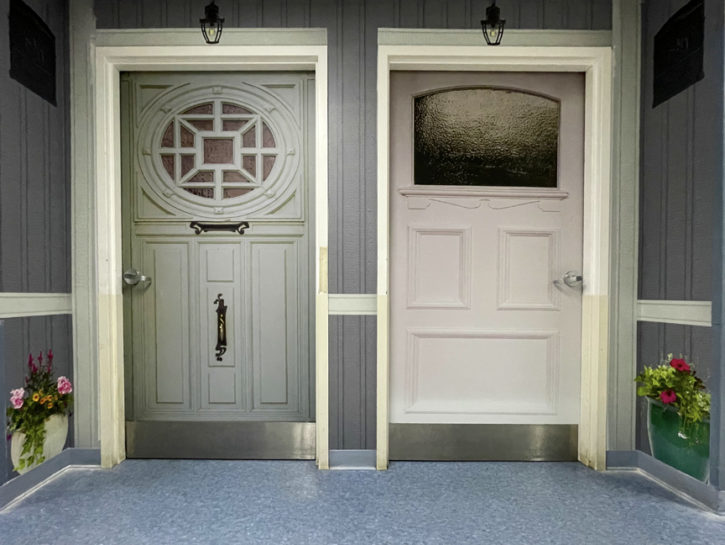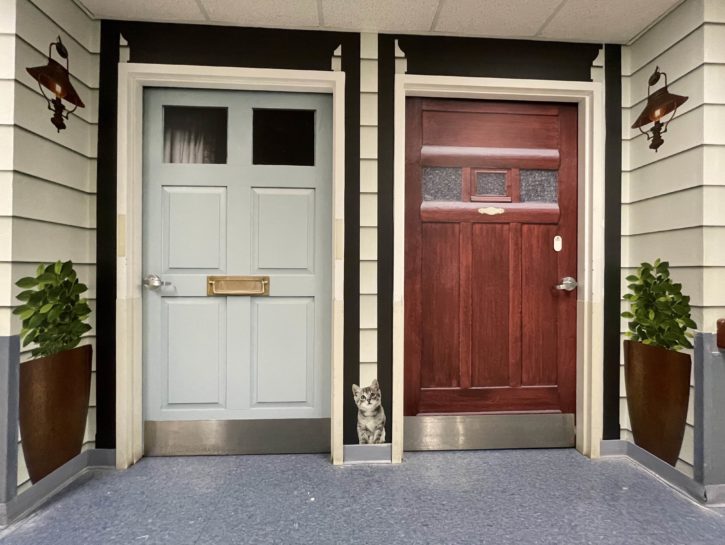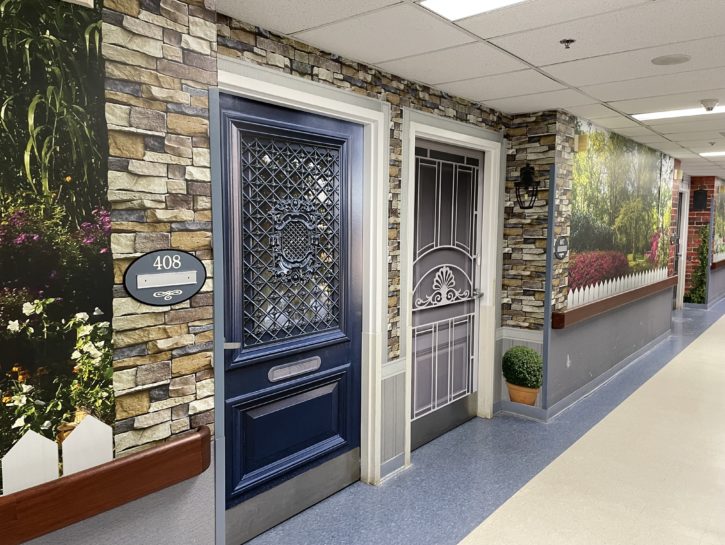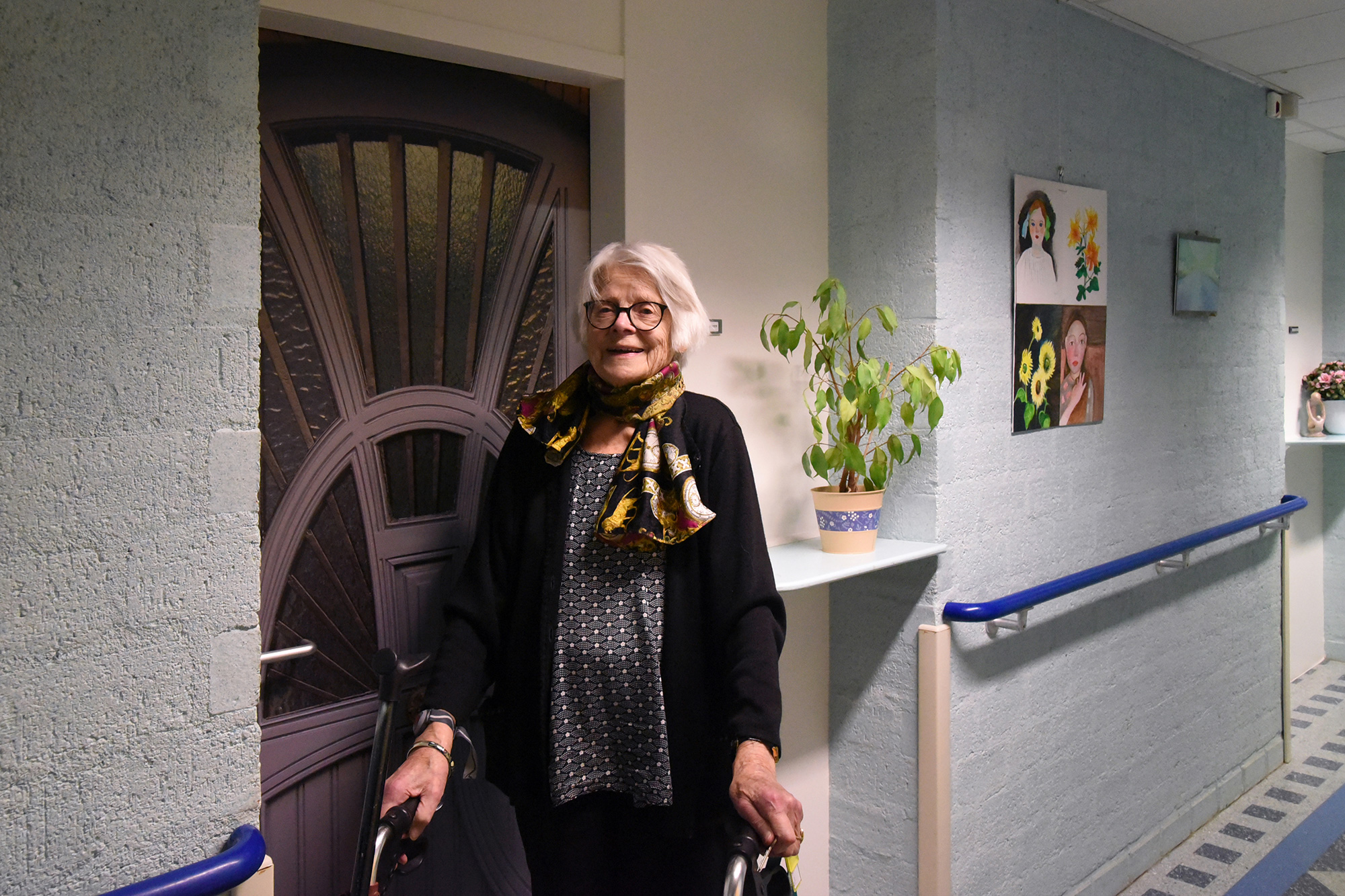Household Model of Care
The household model of care focuses on creating a small, home-like environment within care facilities.

Whether your organization is already operating with the household model, or at an earlier stage on the care continuum, True Doors are a best practice tool for dementia design, enabling improved quality of life and interactions across a number of areas.
The household model of care is an approach to dementia care that focuses on creating a small, home-like environment within care facilities. It is designed to mimic the feel and function of a traditional home rather than a clinical institution. This model emphasizes autonomy, personal choice, and meaningful engagement for residents, which is especially beneficial for people living with dementia.

Key Features of the Household Model
- Small-Scale Living Units:
Residents live in small groups, often with around 10 to 12 people, in units that resemble a household. Each unit includes private bedrooms and shared spaces like a kitchen, dining room, and living area. Our experience leads to the conclusion that living groups of 6-8 people are ideal when adequate trained staffing is consistently available.
This smaller scale promotes familiarity and reduces the sense of being in a large, impersonal institution, which can be confusing and distressing for people with dementia. - Personalization and Independence:
The household model encourages personalization of individual rooms and shared spaces. Residents are involved in daily activities like cooking, cleaning, and decorating, which helps maintain their independence and daily routines.
This involvement fosters a sense of purpose and belonging, which is crucial for the well-being of people with dementia. - Flexible Routines:
Unlike traditional models with rigid schedules, the household model offers flexible routines tailored to the preferences and needs of the residents. This flexibility allows residents to wake, eat, and engage in activities at their own pace, contributing to a more personalized and stress-free environment. - Person-Centered Care:
Care is highly individualized and focuses on building strong, supportive relationships between staff and residents. Staff are often trained to understand each resident’s history, preferences, and needs, enabling them to provide personalized care that respects each resident’s dignity and autonomy. - Integration of Family and Community:
Families are encouraged to participate in the care process and are welcome to visit freely, enhancing the home-like atmosphere. The model also often includes community involvement, with volunteers and local organizations participating in activities and events.

Why the Household Model is Considered Optimal
- Improved Quality of Life:
The household model has been shown to improve the quality of life for residents with dementia. The familiar, home-like environment reduces anxiety and confusion, promoting a sense of safety and comfort.
Studies indicate that residents in household models exhibit fewer behavioral symptoms, like agitation and aggression, because they feel more at ease and engaged in meaningful activities. - Enhanced Social Interaction:
Smaller group settings foster stronger relationships among residents and staff, leading to more meaningful social interactions. This social engagement is vital for cognitive stimulation and emotional well-being.
The communal aspects of daily life, such as shared meals and activities, encourage residents to interact and form friendships, reducing feelings of isolation and loneliness. - Autonomy and Empowerment:
By allowing residents to make choices about their daily routines and activities, the household model empowers them, which can significantly enhance their sense of independence and self-worth.
This empowerment is particularly beneficial for people with dementia, who may feel a loss of control over their lives as their condition progresses.

Challenges in Transitioning to the Household Model
Despite its benefits, transitioning to the household model can present several challenges, especially for organizations with existing large, institutional-style facilities:
- Physical Infrastructure Limitations:
Many existing care facilities are designed in an institutional model with large, centralized dining and activity areas and long corridors with numerous resident rooms. Converting these spaces into smaller, home-like units can require well thought out renovation and investment.
Structural changes might include dividing large spaces into smaller units, adding kitchens and living areas to each unit, and modifying bathrooms and bedrooms to enhance privacy and personalization. - Financial Constraints:
The cost of renovating or building new household-model units can be prohibitive for some organizations, especially if they have limited funding or face budget cuts.
Additionally, the household model often requires more staff per resident to maintain the home-like environment and provide personalized care, which can increase operational costs. - Cultural Shift and Staff Training:
Moving to a household model requires a significant cultural shift for both staff and management. Staff need to adapt to a more flexible, person-centered approach that focuses on building relationships and supporting residents' autonomy rather than following a strict routine.
This shift can be challenging for staff accustomed to traditional, task-oriented caregiving. Extensive training and ongoing support are essential to help staff embrace the household model's philosophy and practices. - Regulatory and Licensing Issues:
Depending on the region, there may be regulatory and licensing challenges when transitioning to a household model. Building codes, health and safety regulations, and licensing requirements may need to be updated to accommodate the new model.
Organizations may need to work closely with regulatory bodies to ensure compliance while advocating for changes that support the household model’s implementation. - Resistance to Change:
There may be resistance from stakeholders, including staff, management, residents, and families, who are accustomed to the traditional model of care. Overcoming this resistance requires clear communication about the benefits of the household model and involving stakeholders in the planning and transition process.
In conclusion, the household model of care represents an optimal approach to dementia care, emphasizing personalization, autonomy, and a home-like environment that significantly improves residents' quality of life.
However, transitioning to this model from a traditional, institutional-style facility can be challenging due to physical, financial, cultural, and regulatory barriers. Successful implementation requires careful planning, investment in infrastructure and training, and a strong commitment to changing the culture of care.
A growing number of providers include True Doors as a requirement from the planning stage for new locations. Other providers use True Doors as a tool to help transform existing facilities into less institutional and more home- and neighborhood - like environments. Homes operating with the household model use True Doors as tools for residents to exercise voice, choice, and control.
Transform impersonal hallways into neighborhoods with homes.
Help people to recognize and find their own doors. Increase privacy and sense of safety. Stimulate reminiscence and social interaction. Help elders feel at home, and energize staff with a beautiful workplace.
